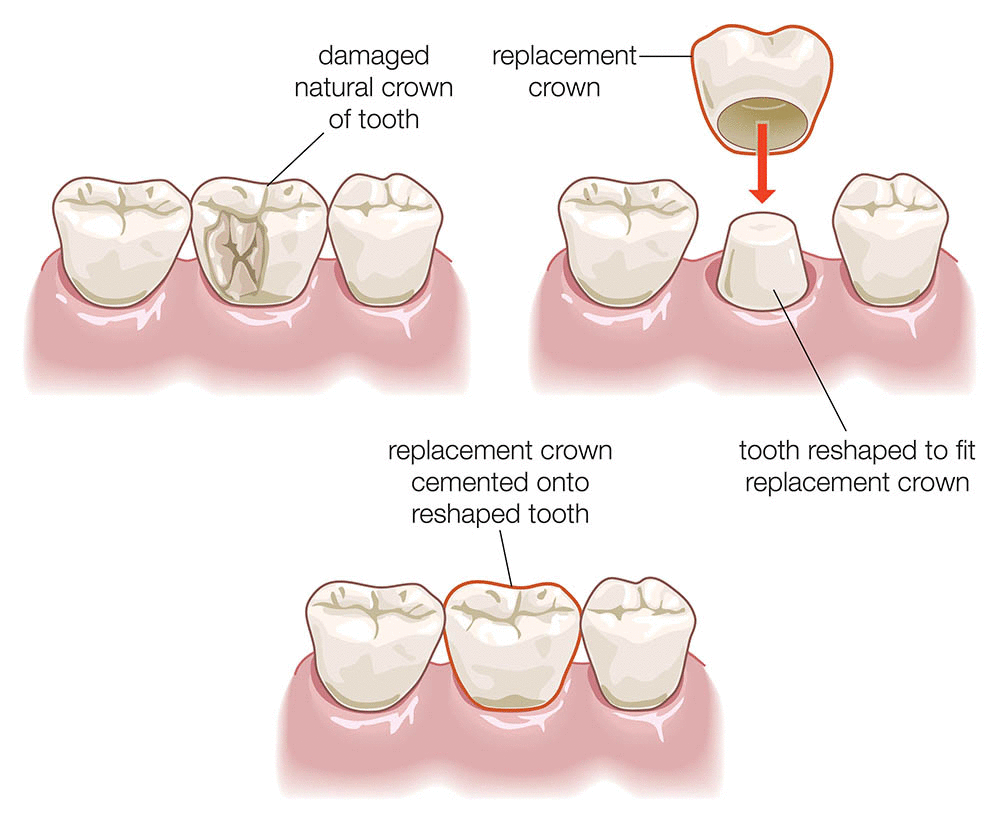Crown & Bridge
Crown and bridge are dental prosthetic devices used to restore or replace missing teeth. They are commonly employed in restorative dentistry to improve the appearance, function, and health of a patient's mouth. Let's explore each of these dental treatments:


Dental Crown:
-
A dental crown, also known as a dental cap, is a tooth-shaped cap that is placed over a damaged or decayed tooth.
-
It serves to restore the tooth's shape, size, strength, and appearance.
-
Crowns may be made of various materials, including porcelain, metal (such as gold or alloy), or a combination of materials.
Reasons for getting a dental crown include:
-
Protection of a weak tooth from further damage.
-
Restoration of a broken or severely worn-down tooth.
-
Covering a tooth with a large filling.
-
Support for a dental bridge.
-
Covering a tooth after a root canal treatment.



Dental Bridge:
-
A dental bridge is a fixed dental restoration used to replace one or more missing teeth.
-
It consists of one or more artificial teeth (pontics) that are anchored in place by crowns on adjacent natural teeth or dental implants.
-
Dental bridges are used to restore both the function and aesthetics of a patient's smile.
Types of dental bridges include:
-
Traditional Bridge: The pontic (artificial tooth) is held in place by dental crowns on adjacent natural teeth.
-
Cantilever Bridge: The pontic is supported by a dental crown on only one adjacent tooth.
-
Maryland Bridge: The pontic is held in place by a metal or porcelain framework bonded to the backs of adjacent teeth.
-
Implant-Supported Bridge: The pontic is supported by dental implants rather than natural teeth.

Both crowns and bridges are custom-made to match the color, size, and shape of your natural teeth, providing a natural and aesthetically pleasing appearance. Additionally, they play a crucial role in maintaining proper dental alignment and preventing issues that may arise due to missing or damaged teeth. It's essential to consult with a dentist to determine the most appropriate treatment based on your specific dental needs.

